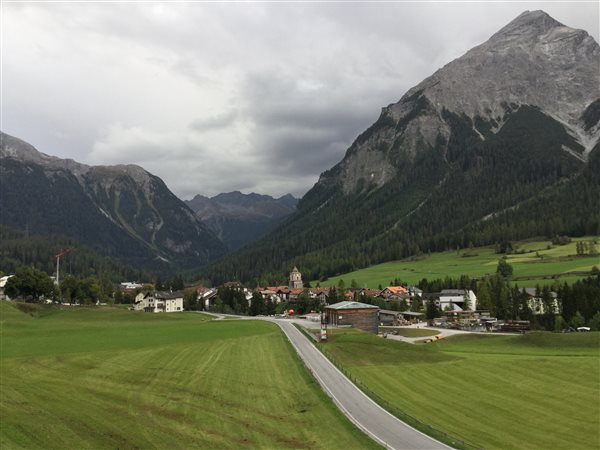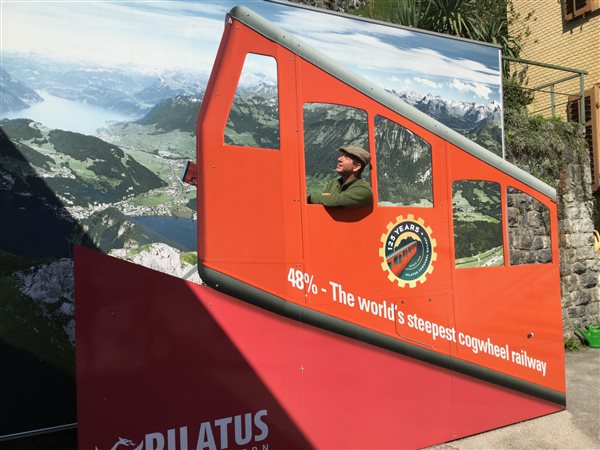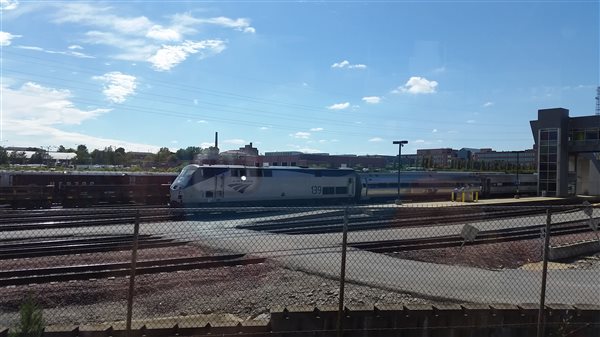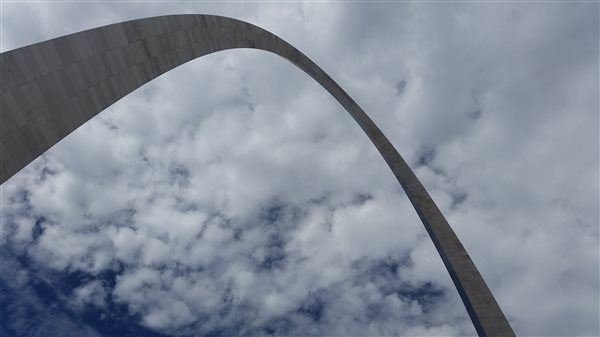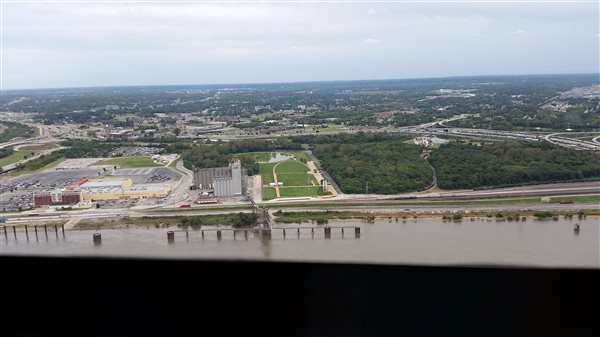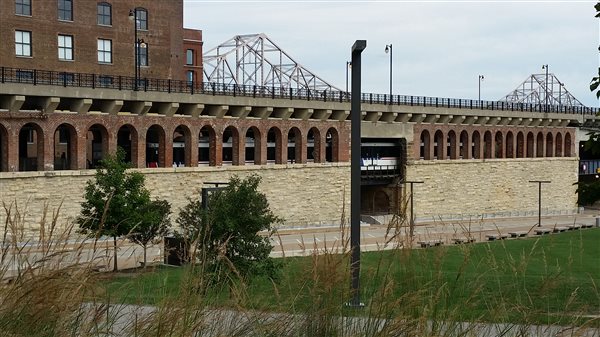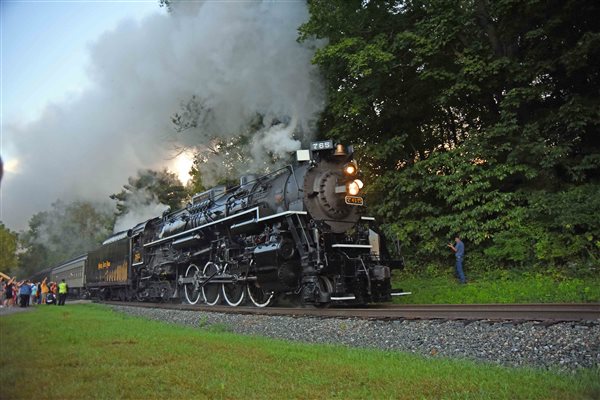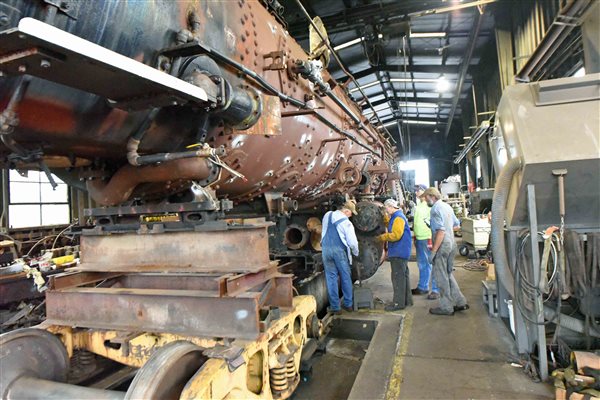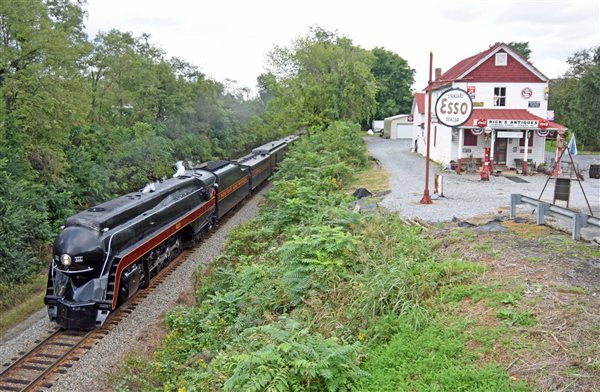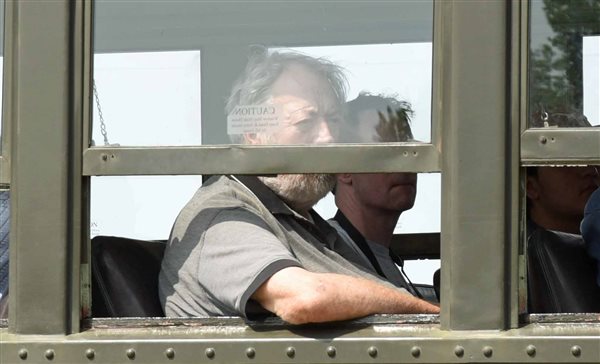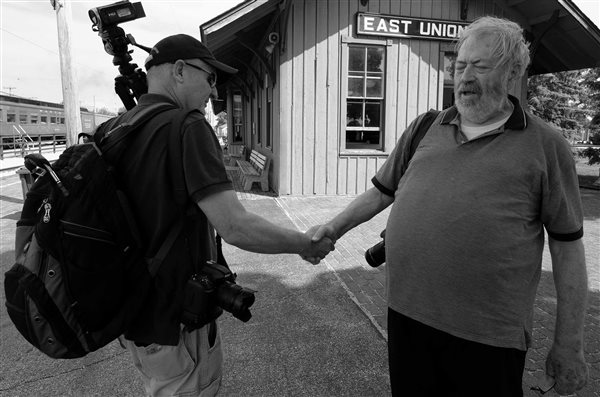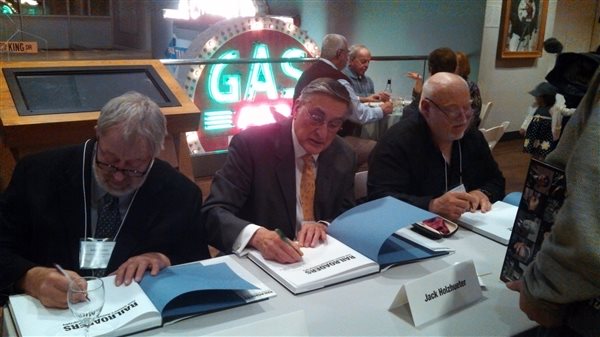I took a much-needed big steam sabbatical in Ohio, Maryland, Virginia, and North Carolina last week. The occasion was Nickel Plate Road 2-8-4 No. 765’s now annual fall visit to the Cuyahoga Valley Scenic Railroad, continuing restoration work on Chesapeake & Ohio 2-6-6-2 No. 1309 at Western Maryland Scenic Railroad, and Norfolk & Western No. 611’s only mainline appearance this year, an unpublicized ferry run between Spencer, N.C., and the Class J’s hometown in Roanoke, Va. Based on that connect-the-dots trip, I’d like to make a few observations on each visit and conclude with an overall thought on the status and future of big steam.
![]()
First, No. 765 puts on a fine show on Cuyahoga Valley’s well-groomed welded-rail mainline through the Cuyahoga Valley National Park. I’m sorry that I’ve waited as long as I have to partake in it. Pulling 15 sold out cars, it’s the right route, the right consist, and the right locomotive for 2.5-hour trips aimed at the public at large. The water-level trip isn’t strenuous, and No. 765 doesn’t get to roll fast, but it’s still a tremendous display of Lima Super Power doing what it was supposed to do in one of the most classic packages ever created and just down the road from Cleveland, where the Van Sweringen brothers set the design for the Nickel Plate locomotives as well as other railroads under their control. While No. 765 is or will soon be returning back to its Fort Wayne Railroad Historical Society world headquarters, the Cuyahoga Valley is certainly a good second home for the locomotive. After riding and watching this operation across three days, it’s mainline steam without the inherent conflicts and difficulties of a Class I main line. I hope its visits will continue and even expand. Next year is the 40th anniversary of No. 765’s restoration to operation. Let’s have a party!
![]()
I spent a day and part of another in the shop at Ridgeley, Md., where the Diversified Rail Services restoration crew is busy preparing Chesapeake & Ohio No. 1309 for a test fire. The on-again, off-again restoration is on again, and I do not see any stopping for it until the engine is in one piece and ready for road testing. If all goes well, I think you’ll see good things happening for this locomotive and this railroad that has had to struggle through one challenge after another in recent years. No. 1309 is taking on its old C&O front end appearance once more, even as the sign painter is ready to finish the tender with Western Maryland lettering and a fireball on the tender. Regardless of the lettering, it will be a beast on the 17-mile all up-grade trip from Cumberland, Md., to Frostburg, Md. An articulated in the East running on a regular basis not far from home territory will be an irresistible attraction. I look forward to it being part of 2019’s Year of the Articulated (Think about the articulateds under restoration and set to run next year: Union Pacific Big Boy No. 4014, Oregon Coast Scenic 2-4-4-2 Skookum, and Black Hills Central 2-6-6-2T, No. 108, a sister to BHC’s already operational No. 110).
![]()
My third and final visit was to witness No. 611 scoot along the Norfolk Southern mainline in North Carolina. An NS freight experiencing trouble on the former Virginian Railway route between Altavista, Va., and Roanoke Va., unexpectedly sent the J into Roanoke on home N&W rails west of Lynchburg, Va., and across fabled Blue Ridge grade. That was poetic justice. The big 4-8-4 worked little with its train of a canteen, two baggage-tool cars, and three gondolas. That was practicality – it was a straight shot into the museum without a side trip to the yard to drop freight cars. It was good to see the J on the mainline even if it was just for one day. The big question, of course, is when will No. 611 run again? Without NS sponsorship and without Amtrak to provide insurance and crews, there’s a lot of doubt out there. No. 611 is an expensive jewel for owner Virginia Museum of Transportation, but one that also brings it a lot of acclaim, members, and revenue. No. 611’s keepers checked every available option for a potential place to run in 2018, and in some cases only the Class J’s considerable size or connecting roads prevented the engine from visiting. I expect they’ll make more such investigations for 2019. The museum, 611’s supporters, NS, and everyone involved worked too hard to raise the money in 2014 and 2015 to restore this, the greatest 4-8-4 ever built, and then allow it to sit idle. The bottom line is that No. 611 is ready to go when there’s a railroad ready to have her. And NS continues to be a good host, allowing the Class J and No. 765 to ferry from one venue to another. My bottom line: If VMT gets creative, and if the right mix of opportunity and desire come together, No. 611 will run again sooner than later.
In conclusion, Big Steam lives on, despite many obstacles. This will be the first October that I can remember in my lifetime when there are no mainline steam excursions on a Class I railroad. None. Zero. Nada. You can’t believe it? Neither can I.[One pleasant exception called to my attention after I first wrote this post: Pere Marquette 2-8-4 No. 1225 will ply the rails of its regional railroad host in Michigan.] But I still remain hopeful. Why? By the end of this year, the third of these magnificent machines should be roadworthy. The conditions for them to thrive are constantly changing. For the two that run on the mainline, there’s still the expense and complexity of installing Positive Train Control. For the one that has its own rails to call home there still remain challenges. There always will be. At one point this year, I was convinced that 2018 was going to be 1958 all over again: That it might be the end of big steam. But then I took a few days in the field, visited the engines, talked to the crews, and I felt the spark that is still alive. All of that that reminded me of a favorite quote, and please forgive the paraphrase: The only thing that will allow these steam locomotives to go cold and become rusty is for good men and women to do nothing.
![]()
